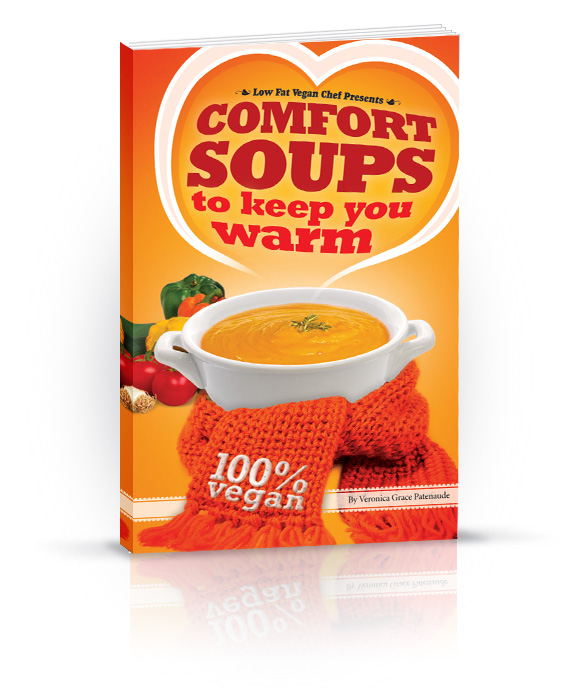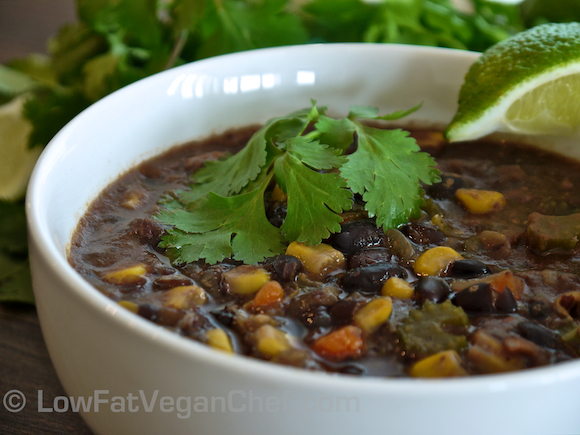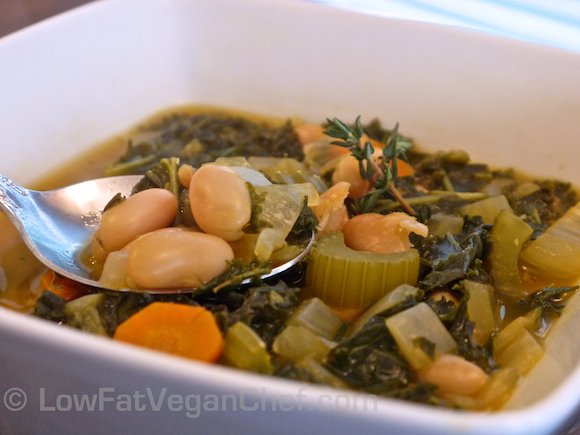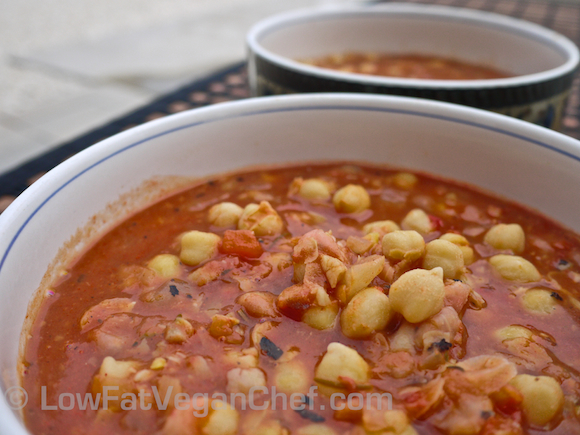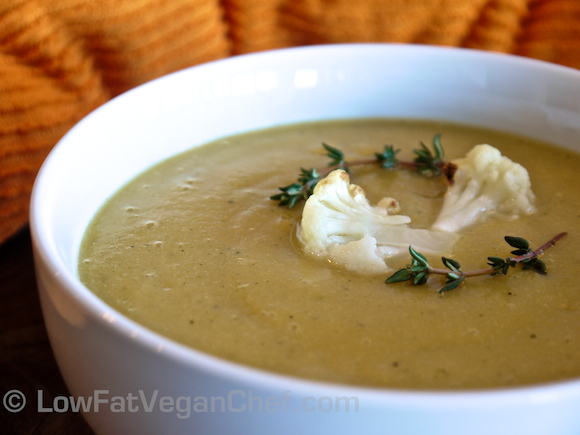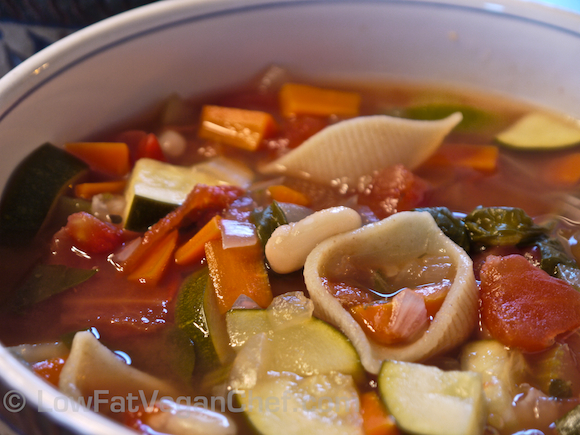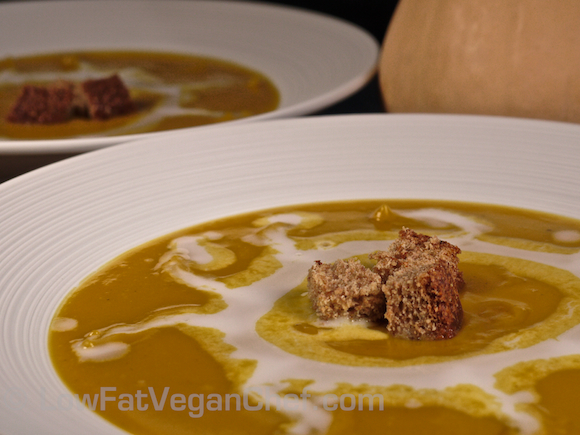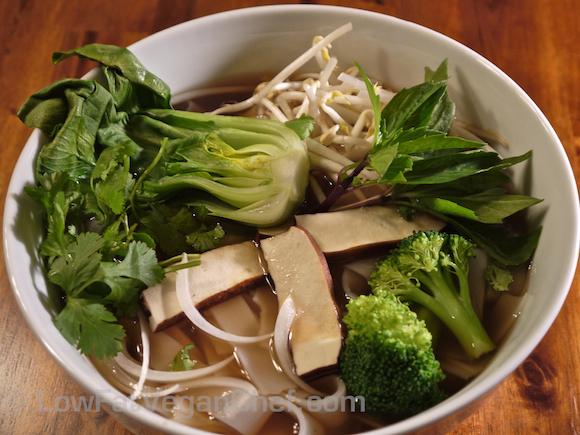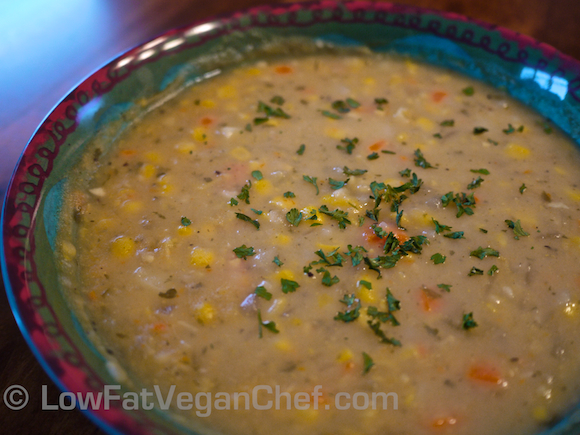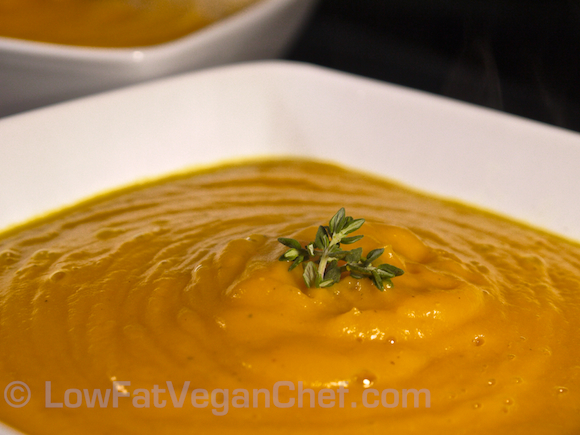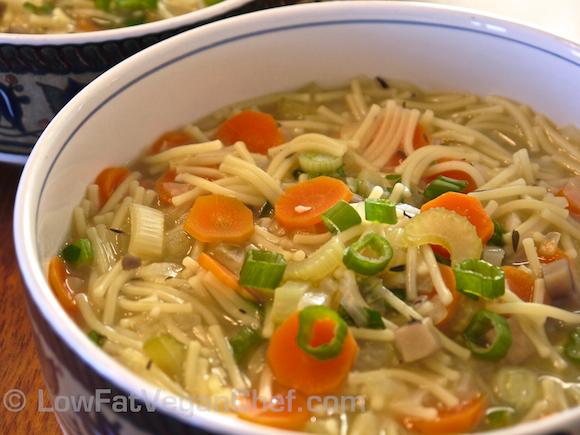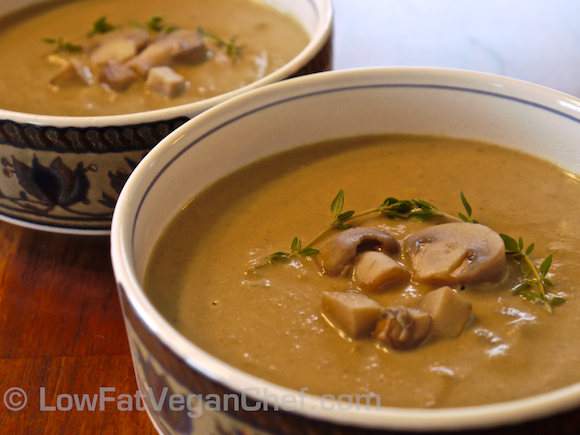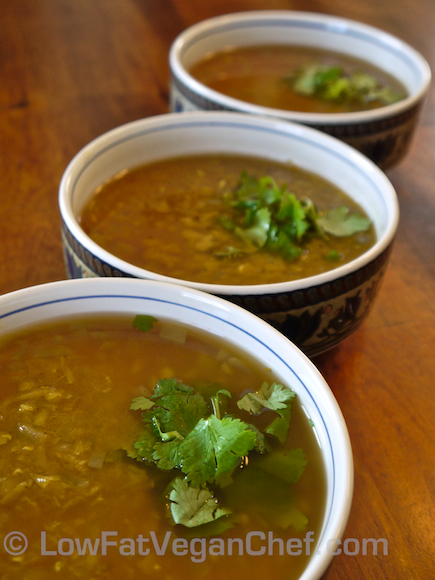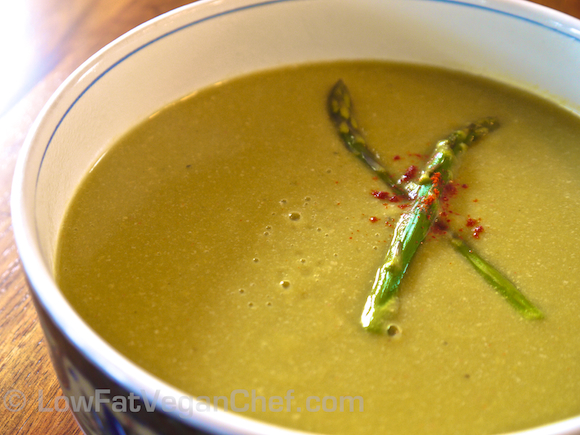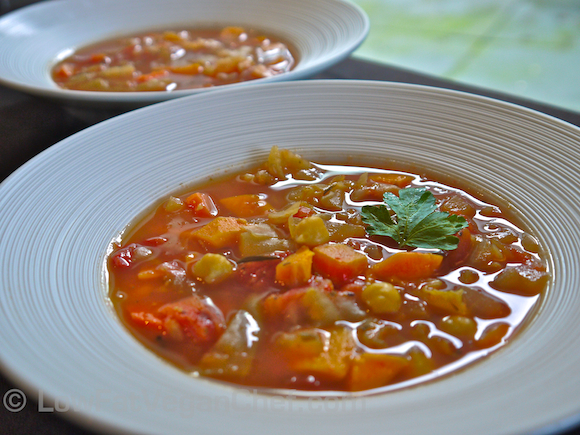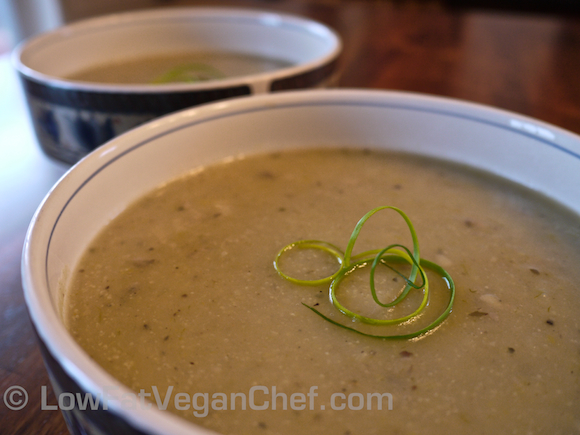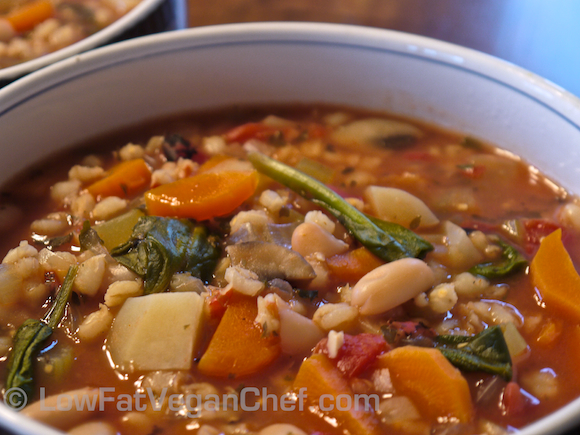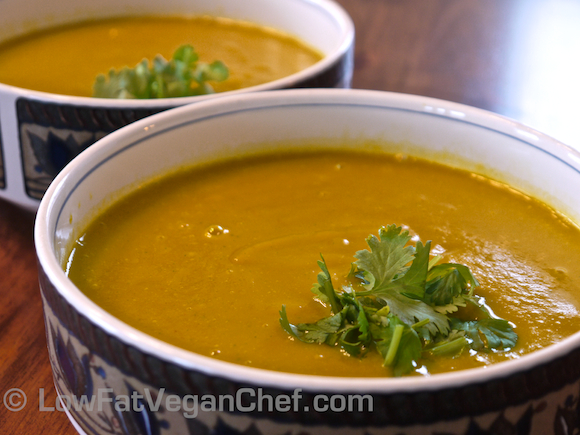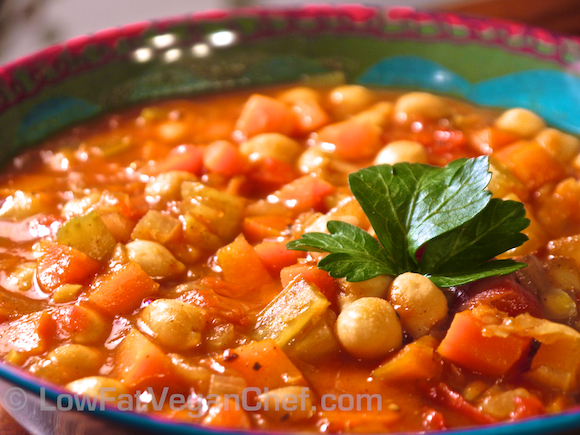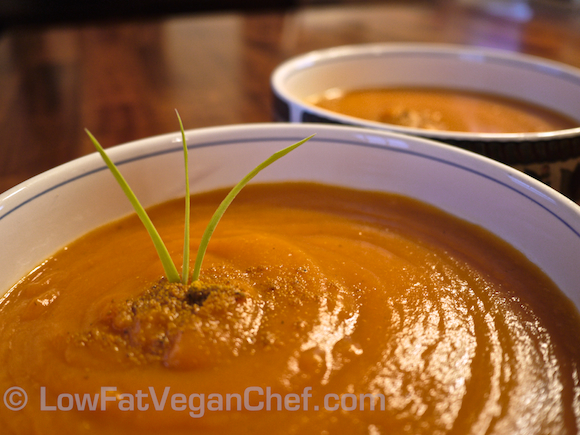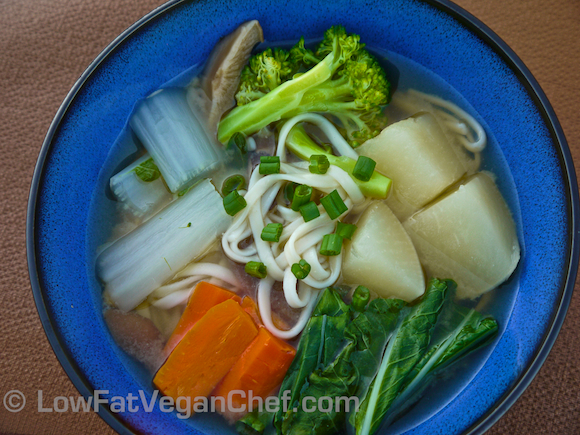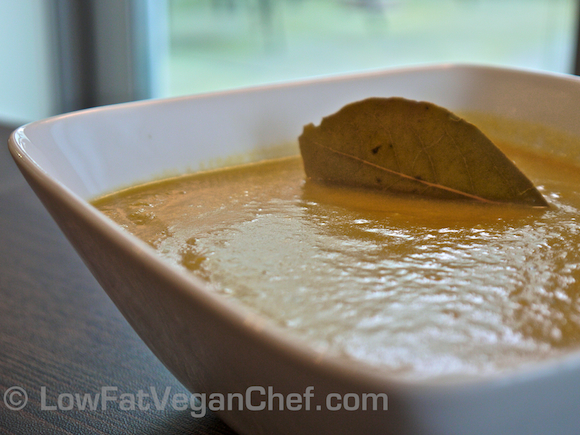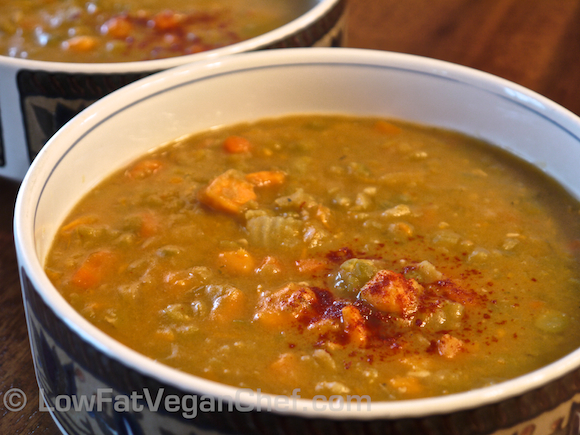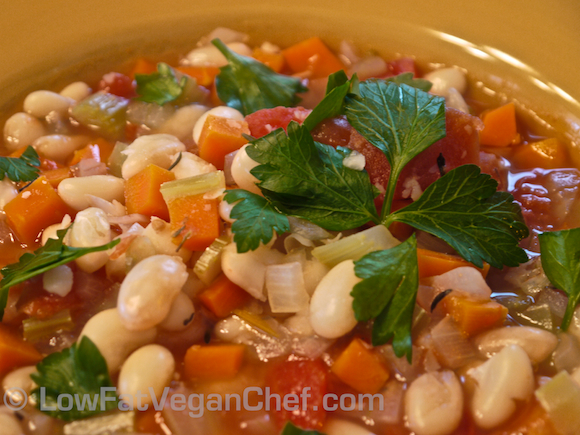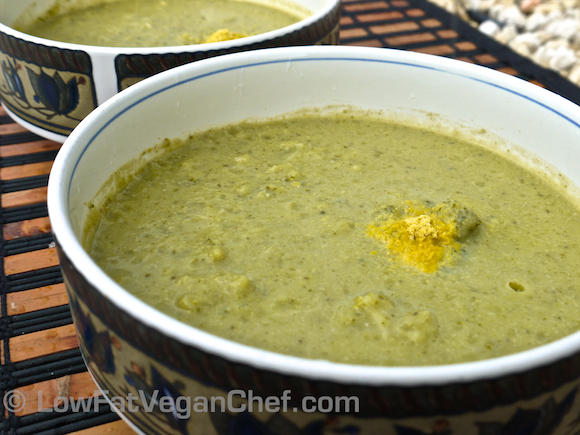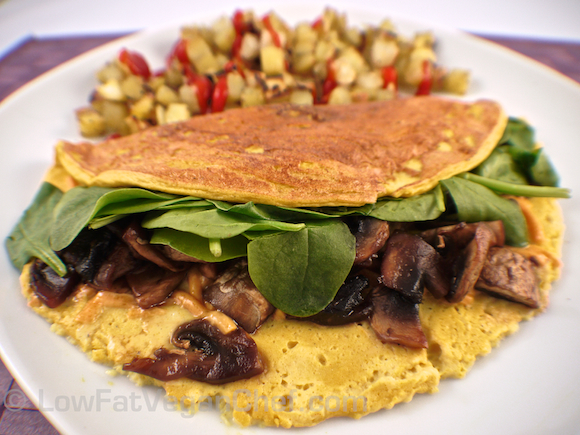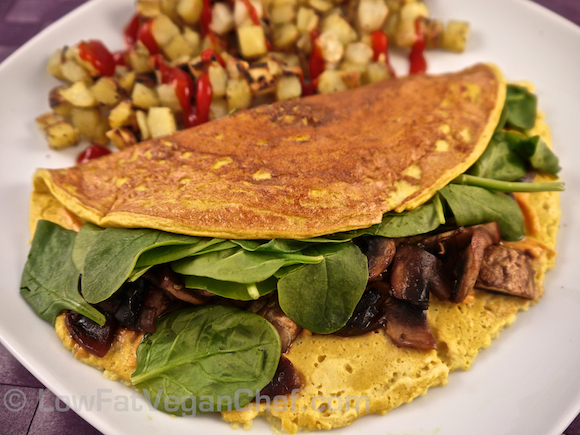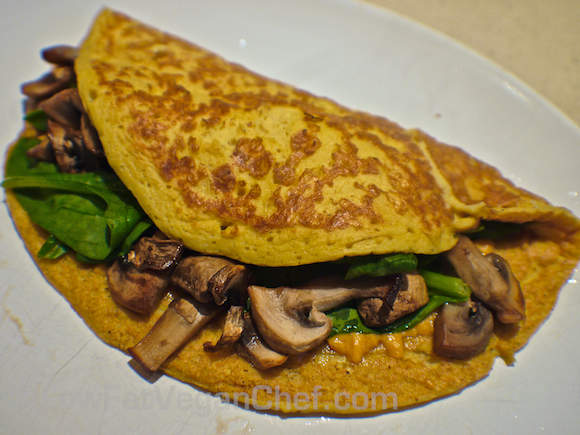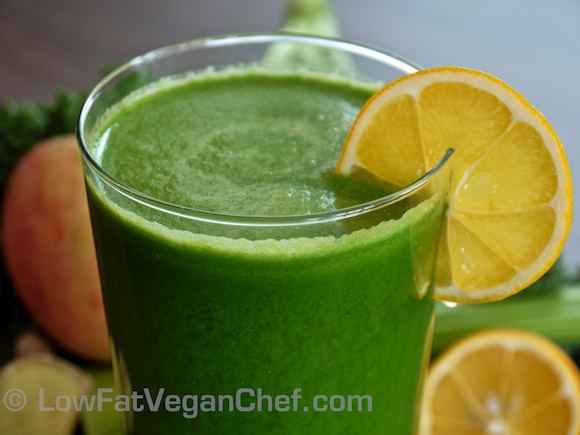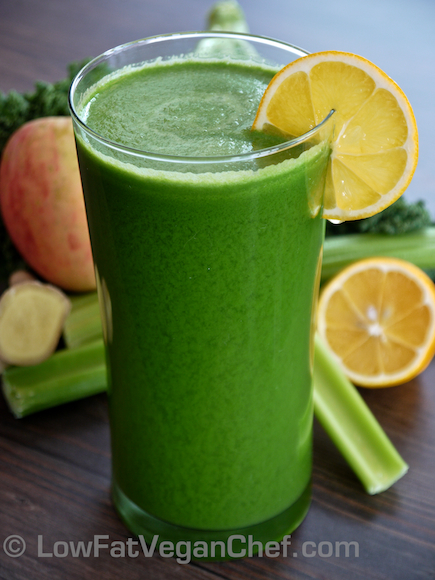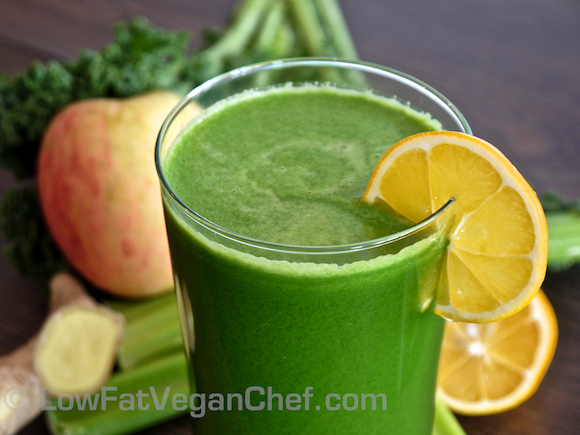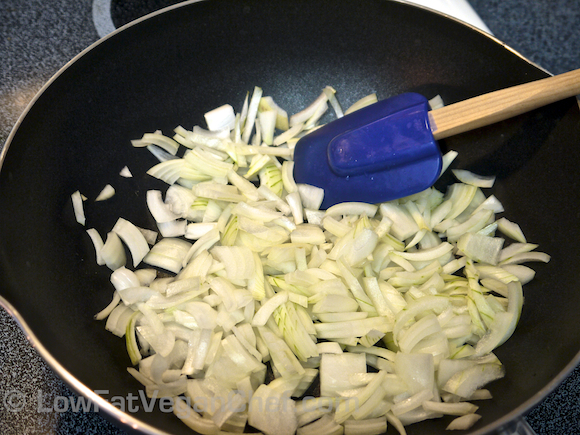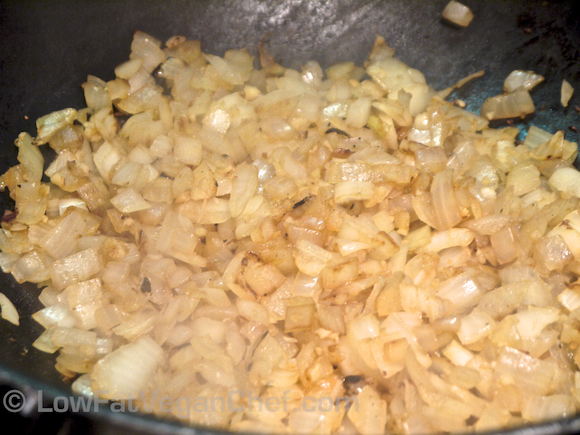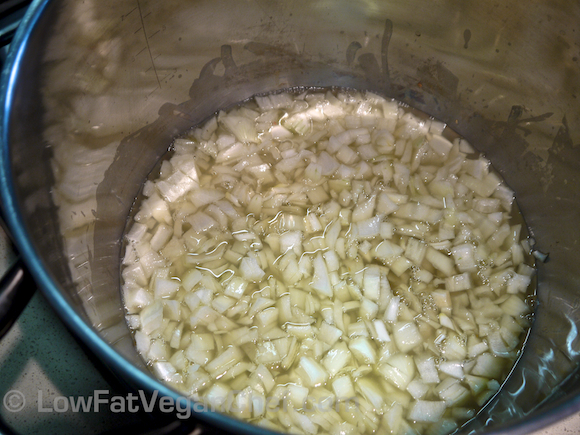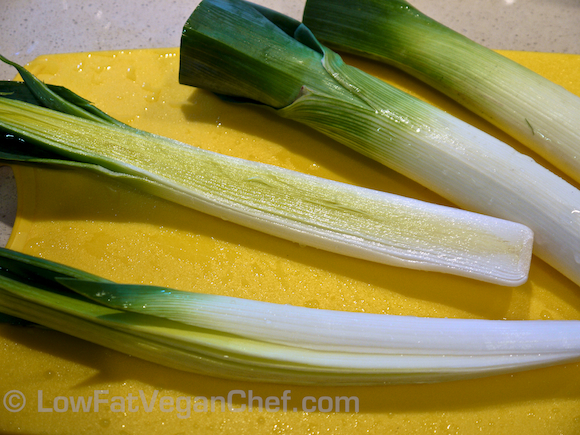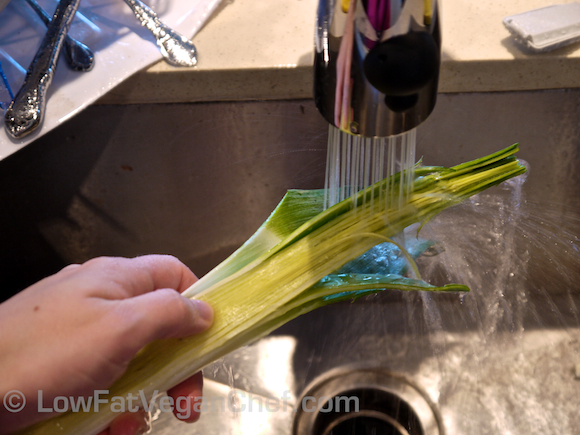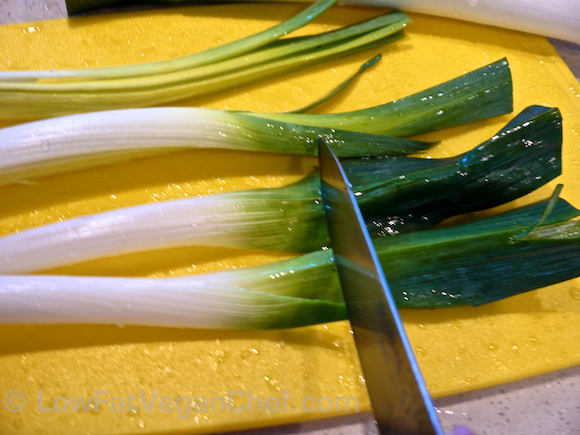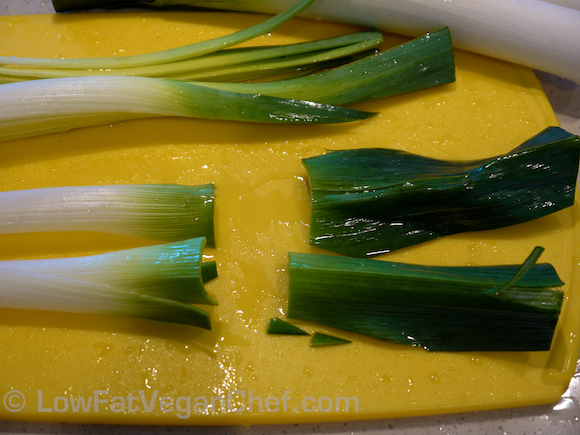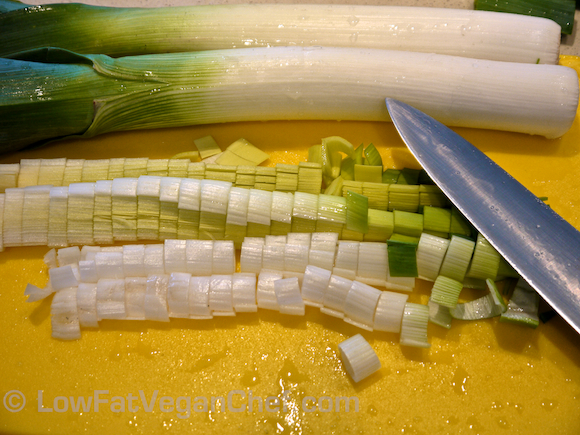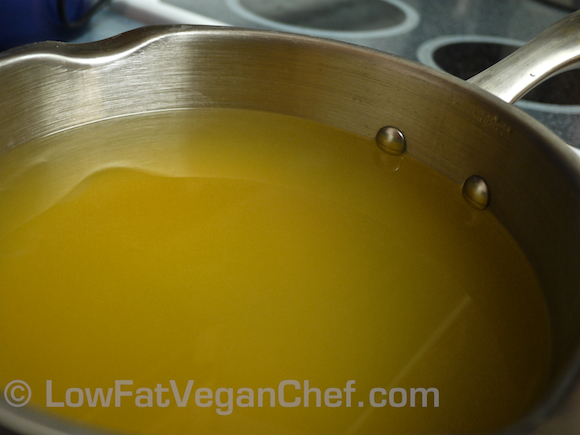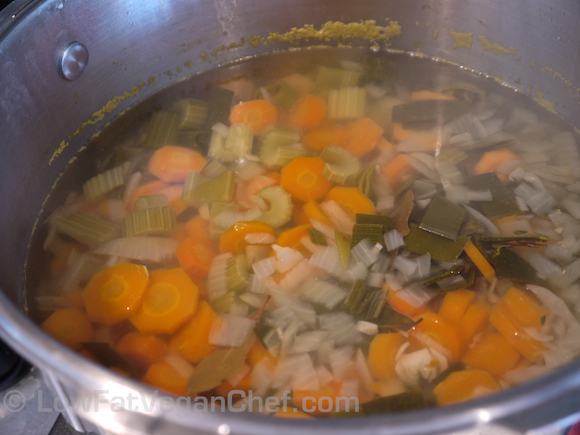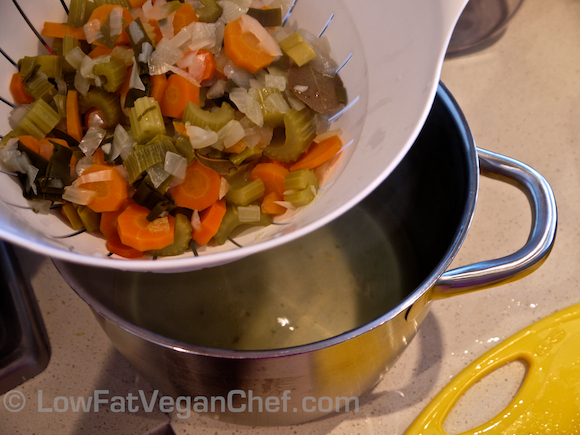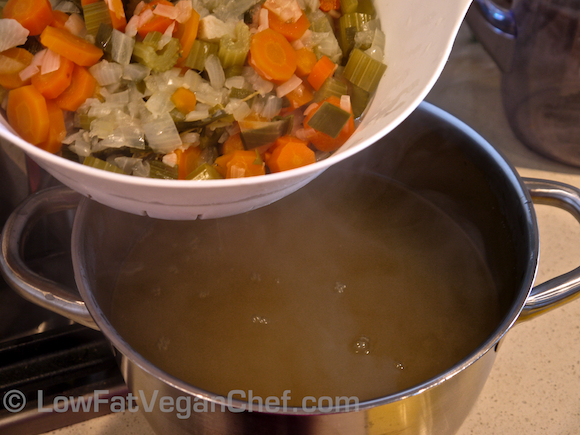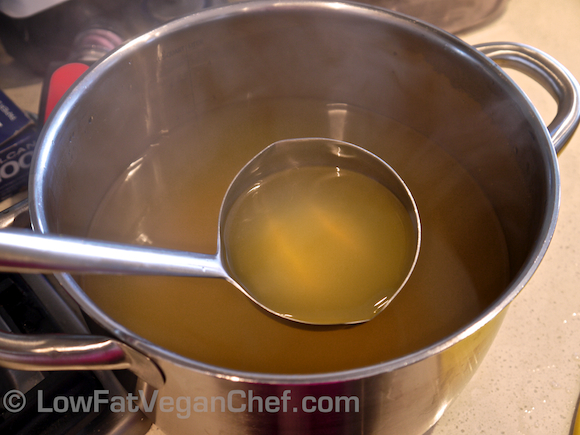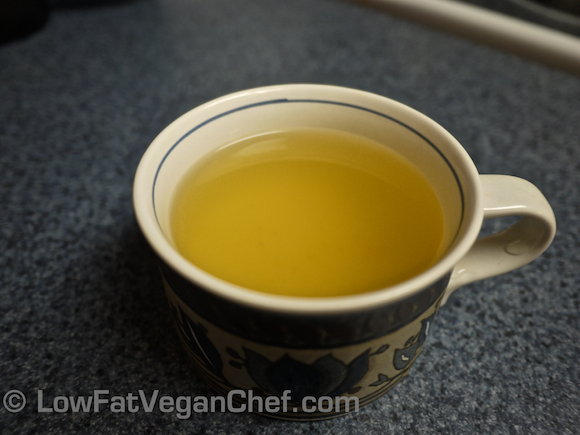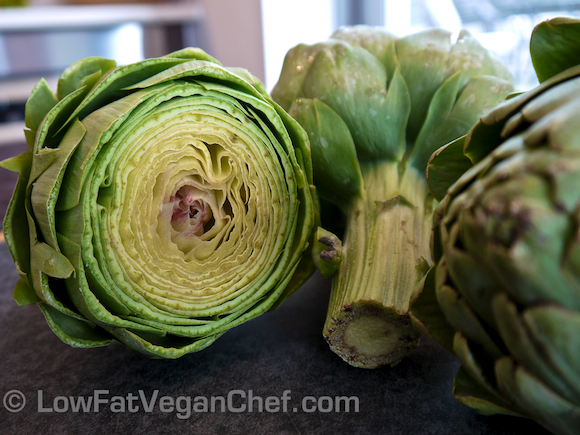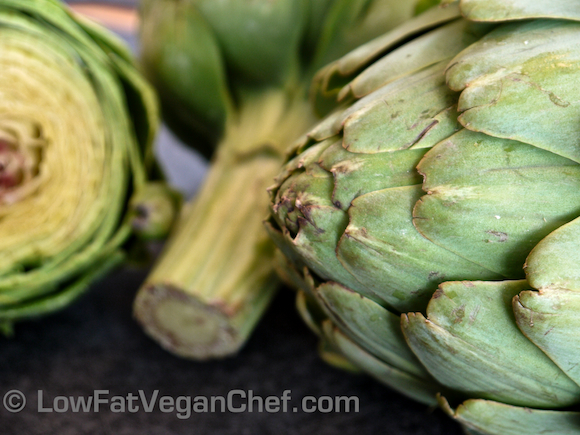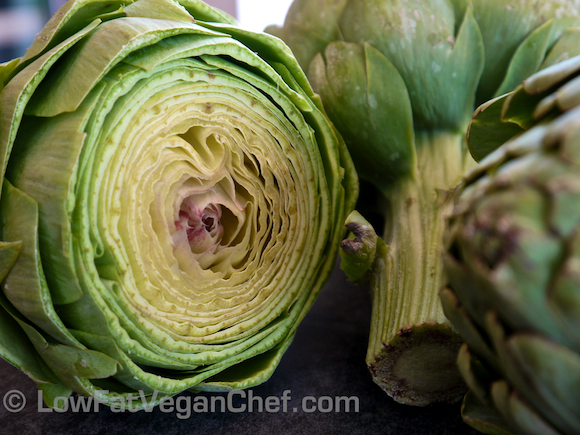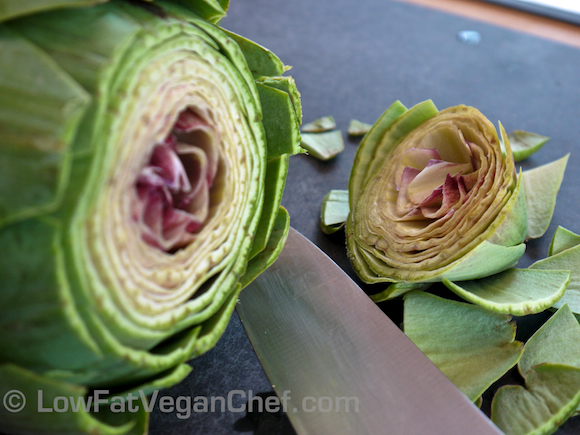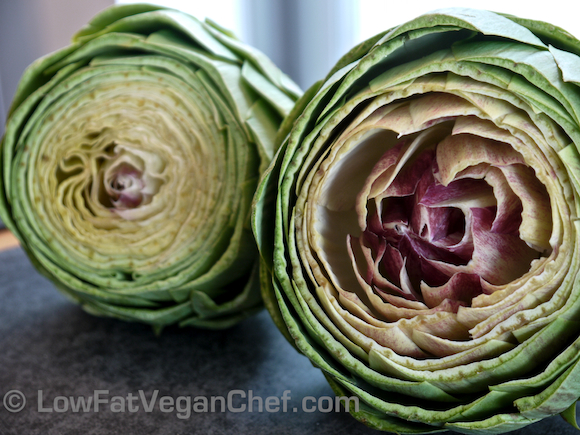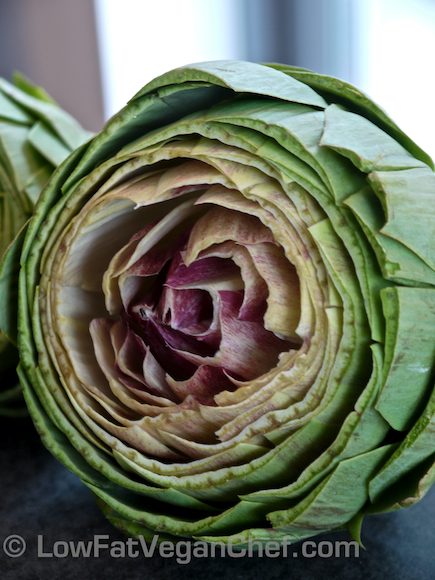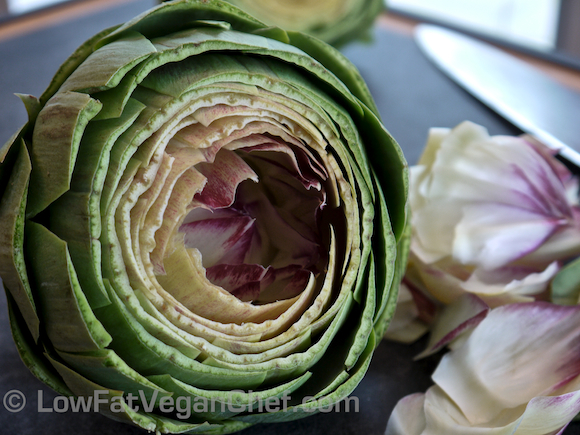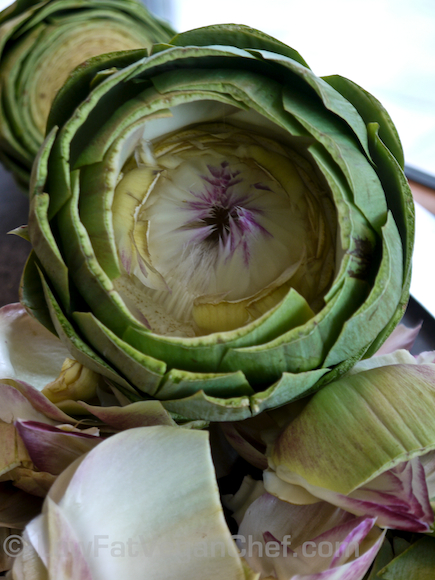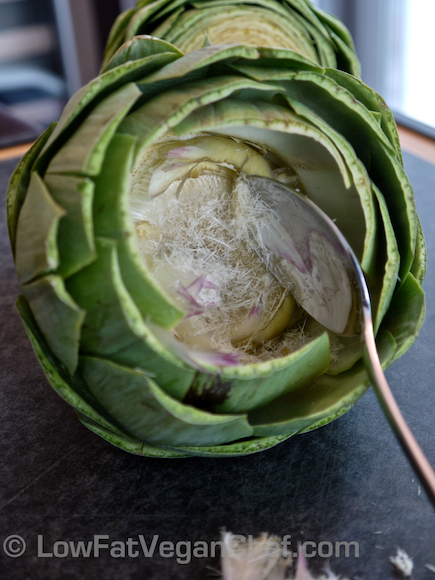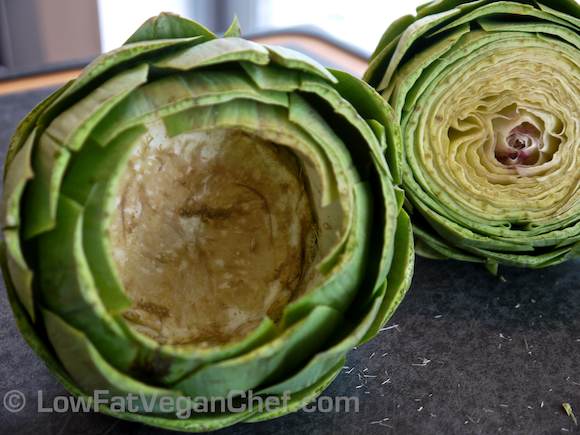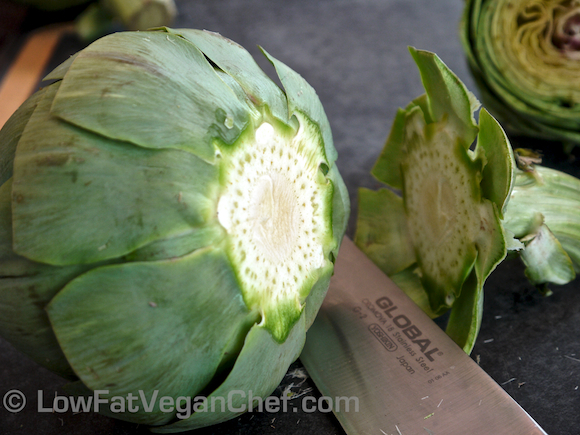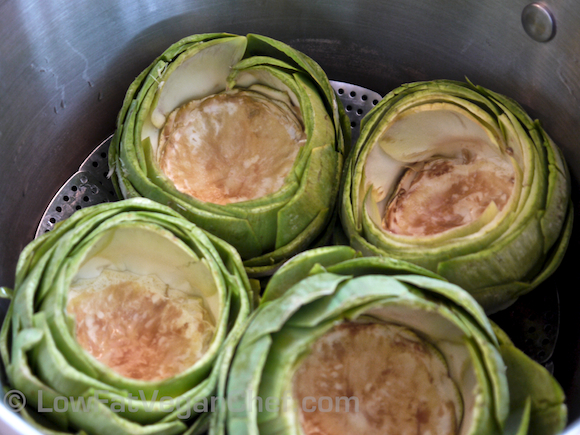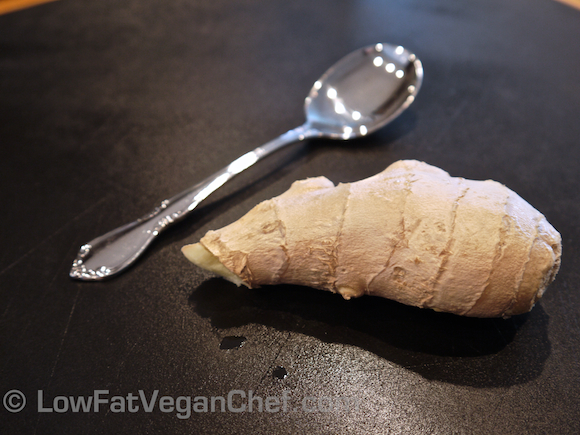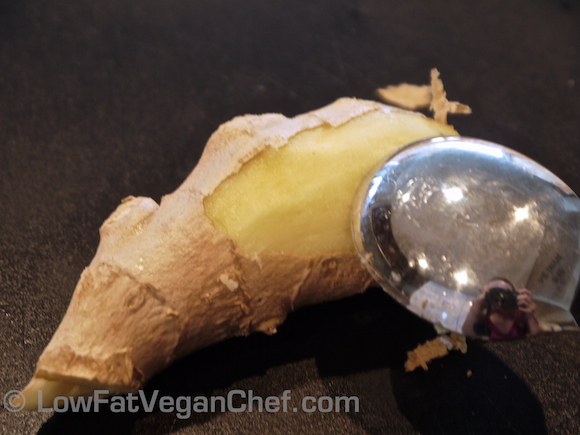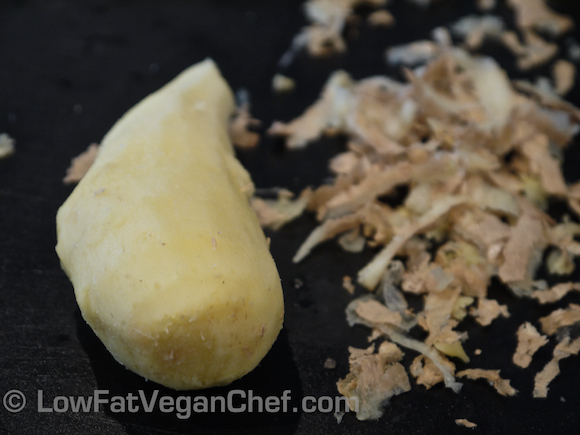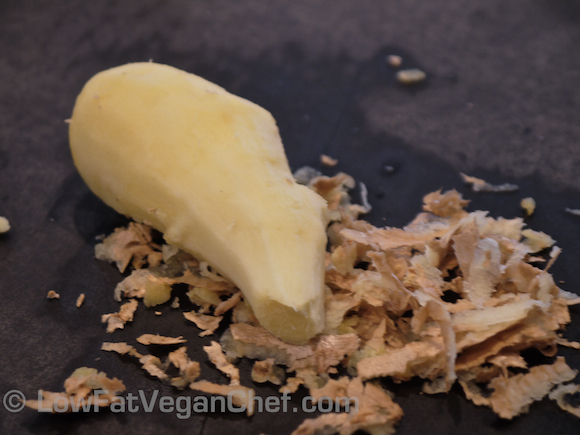Oil-free vegetable stock is something most people don’t make, but it is pretty easy to do (aside from chopping the veggies) and it’s worth it because it’s fresh, tastes better and is cheaper than buying it if you cook like I do. I use my vegetable stock for sautéing onions and garlic in (instead of oil) and as a base for my (oil free) vegan soup recipes.
For my Low Fat Vegan Comfort Soups Recipe eBook I had to make A LOT of stock. Often the store bought stock is only 1 quart or 1 liter and often I needed more than that. It can cost up to $2.99 a pop and that can add up when you use stock as much as I do.
So once a week or maybe twice a week I’ll make some fresh vegetable stock in my pressure cooker. It’s a great way to use up some leftover carrots or celery and some herbs like thyme or parsley that you don’t need for any other recipes.
When compared to the store bought low sodium vegetable broths mine taste MUCH better and have a nice light flavour and a natural sweetness. I find the store bought ones are a little too strong and bitter and are not something you’d want to drink a cup of.
You can use homemade vegetable broth or stock for soup, sautéing, risotto and more. And this way you get to control the flavour and the amount of sodium in it.
So here are my recipes. I have one for a 9 cup recipe and a large one for a 14 cup recipe. Sometimes you just need a lot, and sometimes you just need a little.
Homemade Vegetable Broth/Stock Recipe (smaller recipe)
Yields about 9 cups/2.25 qts/~2.12 L of broth
Ingredients:
8 cups/2 quarts/~1.9 L of filtered water
2 large onions, diced
4-6 cloves of garlic, minced
4 large carrots, peeled and sliced
3 large stalks of celery, sliced
Mushroom stems and ends *optional
1/2 bunch of parsley and a few sprigs of fresh herbs like thyme
2 bay leaves
1/4 tsp. whole peppercorns
Dash of salt *optional
Pressure Cooker Method:
1. Place the vegetables, water and seasonings into a pressure cooker. Fill with water and bring to high pressure and cook for 5-6 minutes until vegetables are very tender. Use the quick release method (putting in the sink and pouring water over the lid until it releases) and let it cool until you can open the lid.
2. Strain vegetables from broth in a large mesh strainer and use a ladle, nested measuring cup or bowl to press out the excess liquid from vegetables through the strainer to yield the most broth.
Stovetop Method:
1. Place vegetables, water and seasonings into a large pot and bring to a boil. When it’s boiling turn it down to low and simmer for an hour. Don’t let your vegetables overcook and completely fall apart, check on them after 45 minutes or so.
2. Strain vegetables from broth in a large mesh strainer and use a ladle, nested measuring cup or bowl to press out the excess liquid from vegetables through the strainer.
Additional Tips:
Use the broth right away or let it cool and store in a sealed container(s) in the fridge for up to 3 days. You can freeze any extra you won’t use in that time. Use in recipes or for daily sautéing for onions and garlic.
For the pressure cooker, I chop the vegetables a little smaller. For the stovetop you can cut them into bigger chunks and keep the garlic whole, as they will cook longer.
This recipe is really flexible, if I need more for a soup recipe I’ll just add a little more water and dilute it. When I’m making it, I will use what vegetables I have but the main important ones are onions, carrots and herbs. The point is you want the water to taste like vegetables and not like plain water and homemade broth gives the best flavor for soup.
You can also use any other vegetable tops or skins if you like, but leave out the celery leaves, as they can be too bitter. I suggest that the vegetable peels be organic if you do use them. You can also add leeks, green/spring onions, other root vegetables, already cooked beans etc. to add more depth to the flavor.
Things You Do Not Want To Add To Vegetable Broth
Don’t add cruciferous vegetables as they contain sulfur and can make the broth bitter and smell unpleasant. No kale, collards, cabbage, broccoli, cauliflower, Brussels sprouts or leafy greens aside from fresh herbs. You’d get more out of eating or juicing the greens than adding them to your broth. It won’t make it taste better for your recipes. Please do not add raw beans, grains or pasta to your vegetable broth either.
My stock is done cooking so I open the lid.
I ladle it out into a strainer/colander that is over another pot or bowl.
Pick up the strainer/colander filled with cooked vegetables and strain it.
I push the juices out the veggies to get any extra broth.
Now my vegetable broth/stock is ready to be used in my recipes!
How about a cup of fresh vegetable broth?
Larger Vegetable Soup Stock Recipe
Yields 14 cups of broth
Ingredients:
12-13 cups/~3 qts./2.9 L of filtered water
2 large onions, diced
6 cloves of garlic, minced
8 large carrots, sliced
10 stalks of celery, sliced
Any other vegetable leftovers like the tops of leeks or ends of mushrooms
3 bay leaves
3 sprigs of fresh thyme
Pinch of salt
1/4 tsp whole peppercorns
Pressure Cooker Method:
1. Place the vegetables, water and seasonings into a pressure cooker. Fill with water and bring to high pressure and cook for 5-6 minutes until vegetables are very tender. Use the quick release method (putting in the sink and pouring water over the lid until it releases) and let it cool until you can open the lid.
2. Strain vegetables from broth in a large mesh strainer and use a ladle, nested measuring cup or bowl to press out the excess liquid from vegetables through the strainer to yield the most broth.
Stovetop Method:
1. Place vegetables, water and seasonings into a large pot and bring to a boil. When it’s boiling turn it down to low and simmer for an hour. Don’t let your vegetables overcook and completely fall apart, check on them after 45 minutes or so.
2. Strain vegetables from broth in a large mesh strainer and use a ladle, nested measuring cup or bowl to press out the excess liquid from vegetables through the strainer.

